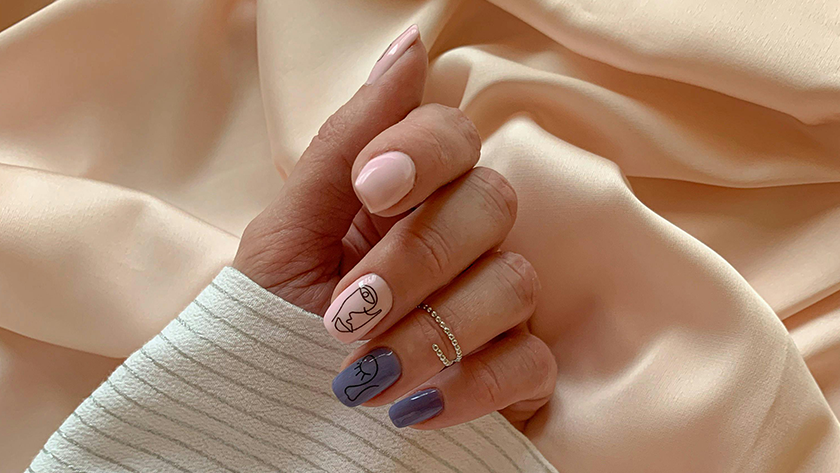
Kann man durch künstliche Nägel Nagelpilz bekommen?
Künstliche Nägel sind eine beliebte Wahl, wenn es um die Verschönerung der Nägel geht. Sie verleihen ihnen eine sofortige Verwandlung, verleihen ihnen Länge, Stärke und eine Vielzahl von Designs. Doch bei all dem Glamour bleibt die Frage: Kann man durch künstliche Nägel Nagelpilz bekommen? Die kurze Antwort lautet: Ja, das ist möglich. Hier erfahren Sie alles über die Risiken, die Entstehung und Möglichkeiten zur Vorbeugung.
Nagelpilz verstehen
Nagelpilz, auch Onychomykose genannt, ist eine häufige Erkrankung, die sowohl Finger- als auch Fußnägel befallen kann. Er beginnt meist als weißer oder gelber Fleck unter der Nagelspitze und kann sich tiefer ausbreiten, was zu Verfärbungen, Verdickungen und Absplitterungen am Nagelrand führt. Obwohl Nagelpilz an sich normalerweise nicht gefährlich ist, kann er unansehnlich und manchmal schmerzhaft sein.
Wie künstliche Nägel Nagelpilz verursachen können
Künstliche Nägel können das Risiko für Nagelpilz auf verschiedene Weise erhöhen:
-
Feuchtigkeitsaufnahme : Künstliche Nägel, insbesondere Acryl- oder Gelnägel, können Ihre natürlichen Nägel dicht verschließen. Wenn Feuchtigkeit zwischen dem künstlichen und dem echten Nagel eingeschlossen wird, entsteht ein idealer Nährboden für Pilzbefall.
-
Falsche Anwendung : Werden künstliche Nägel nicht korrekt angebracht, können sich zwischen den künstlichen und natürlichen Nägeln Lücken bilden. In diesen Lücken können sich Feuchtigkeit und Schmutz ansammeln und so Pilzbefall fördern.
-
Beschädigung des Naturnagels : Das Anbringen und Entfernen künstlicher Nägel kann den Naturnagel und die umgebende Haut beschädigen. Jede Beschädigung des Nagelbetts kann Pilzbefall begünstigen.
-
Mangelhafte Hygienepraktiken : Wenn die beim Nagelauftragen verwendeten Werkzeuge und Produkte nicht richtig desinfiziert werden, können Pilze und Bakterien auf Ihre Nägel gelangen.
Symptome von Nagelpilz
Achten Sie auf die folgenden Anzeichen von Nagelpilz:
- Verfärbung (weiß, gelb oder braun)
- Verdickte Nägel
- Brüchige oder brüchige Nägel
- Verzerrte Nagelform
- Unangenehmer Geruch
Nagelpilz mit künstlichen Nägeln vorbeugen
Damit Sie Ihre künstlichen Nägel genießen können, ohne Angst vor Nagelpilz haben zu müssen, befolgen Sie diese Tipps:
-
Wählen Sie einen seriösen Salon : Stellen Sie sicher, dass der Salon strenge Hygienevorschriften einhält. Die Werkzeuge und Geräte sollten zwischen den Anwendungen sterilisiert werden.
-
Entscheiden Sie sich für Qualitätsprodukte : Hochwertige Produkte verursachen weniger Schäden und bieten einen besseren Schutz vor Pilzbefall.
-
Halten Sie Ihre Nägel trocken : Vermeiden Sie längeren Kontakt mit Wasser und halten Sie Ihre Nägel so trocken wie möglich. Trocknen Sie Ihre Hände und Nägel nach dem Waschen gründlich ab.
-
Gönnen Sie Ihren Nägeln eine Pause : Gönnen Sie Ihren natürlichen Nägeln zwischen den Anwendungen künstlicher Nägel Zeit zum Atmen. Dies trägt dazu bei, ihre Gesundheit zu erhalten und das Risiko von Pilzinfektionen zu verringern.
-
Richtige Entfernung : Lassen Sie Ihre künstlichen Nägel immer von einem Fachmann entfernen. Eine unsachgemäße Entfernung kann Ihre natürlichen Nägel schädigen und das Pilzrisiko erhöhen.
Behandlung von Nagelpilz
Bei Verdacht auf Nagelpilz ist eine umgehende Behandlung unerlässlich. Die Lösung gegen Nagelpilz kann auch auf den Fingernägeln angewendet werden und enthält keine aggressiven Chemikalien, die die Nägel langfristig schädigen. In manchen Fällen empfiehlt ein Arzt die Entfernung des Nagels, um die Infektion direkt behandeln zu können.
Abschluss
Künstliche Nägel können zwar eine schöne und witzige Möglichkeit sein, sich auszudrücken, bergen aber auch Risiken, darunter die Gefahr von Nagelpilz. Wenn Sie diese Risiken kennen und Maßnahmen ergreifen, um sie zu minimieren, können Sie Ihre künstlichen Nägel unbeschwert genießen. Achten Sie stets auf gesunde Nägel, indem Sie auf gute Hygiene achten, seriöse Nagelstudios wählen und Ihren natürlichen Nägeln ab und zu eine Pause gönnen.
Denken Sie daran: Schöne Nägel beginnen mit gesunden Nägeln. Halten Sie sie sauber, trocken und pflegen Sie sie richtig, um Pilzinfektionen zu vermeiden und Ihren gepflegten Look mit Selbstvertrauen zu genießen.










